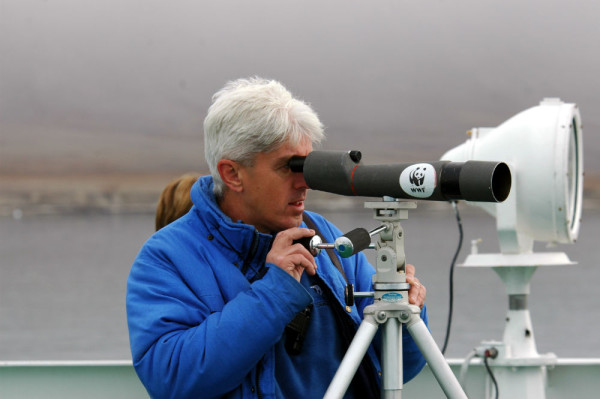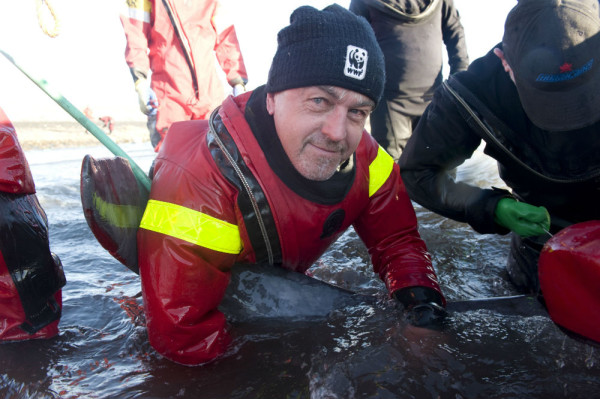Lessons learned the hard way: Will we do right by tomorrow's oceans?
The day that really changed my life was in the UK’s Shetland Islands, on an uninhabited remote island, where I had been studying a seabird – the Black Guillemot (Cepphus grylle) for my doctoral thesis at Oxford University. Right at the last month of my fieldwork, I fell down a big cliff while measuring and banding the chicks – and ended up on the beach, with my broken leg and bones all in a mess – staring out in calm over-ride shock at the big ocean wondering what on earth I was doing there!
Well, I was extremely lucky – landing the right way up, and only taking 3 months to get back to writing up my thesis. I lived to experience many more great times finding out amazing things about seabirds, whales and other marine mammals, and now , and now devote most of my time to trying to apply my knowledge and experience to sensible long-term planning as the arctic marine systems open up, driven by global climate change.

That original seabird research was funded by BP actually, for despite the assurances of the industry and governments, it took only 3 days from the opening of the North Sea’s first new oil terminal back in the 1970s, for all the promises to be shattered, as the Esso Bernicia tanker smashed into the jetty in bad winter weather. That oil spill wiped out most of the otters, loons and black guillemots wintering within 100 k or more – hence the new resolve for studies – and swift tightening of oil spill contingency plans!
The Arctic oceans are enormous by comparison with the North Sea – yet I’ve been fortunate to travel quite a bit in Canada’s northern waters, and to marvel at those ‘hotspots’ where marine life converges in great abundance, feasting on the summer bloom of phytoplankton-zooplankton-small fish-bigger fish- seabirds and of course marine mammals. My very first polar bear at sea was from a cruise ship I was lecturing on, at 6 am 85 km east of Baffin Island – just me and the bear, with everyone else fast asleep (except the captain I assume!), and bruin just steadily paddling his big strong forelimbs heading for Canada. He certainly wasn’t designed like a streamlined arctic whale, but in water the adult polar bear’s endurance often sees him safely to land, and even without sea ice in the summer, truly deserving of being classified as a ‘marine mammal’.

I get a real thrill every time I have an opportunity to see the arctic ocean, in fact any ocean! These are some of the world’s last and best remaining natural spaces – with such bountiful and still poorly understood marine life forms. In the arctic the 8 Arctic governments forming the Arctic Council have now committed to identify and then safeguard all the ecologically and culturally important areas – ahead of major decisions on increased shipping and oil & gas exploration and developments. This is indeed the right way to approach such situations – getting ahead of things by learning from past mistakes.
Oh, and by the way, I don’t go near cliffs anymore, much as I love seabirds!
